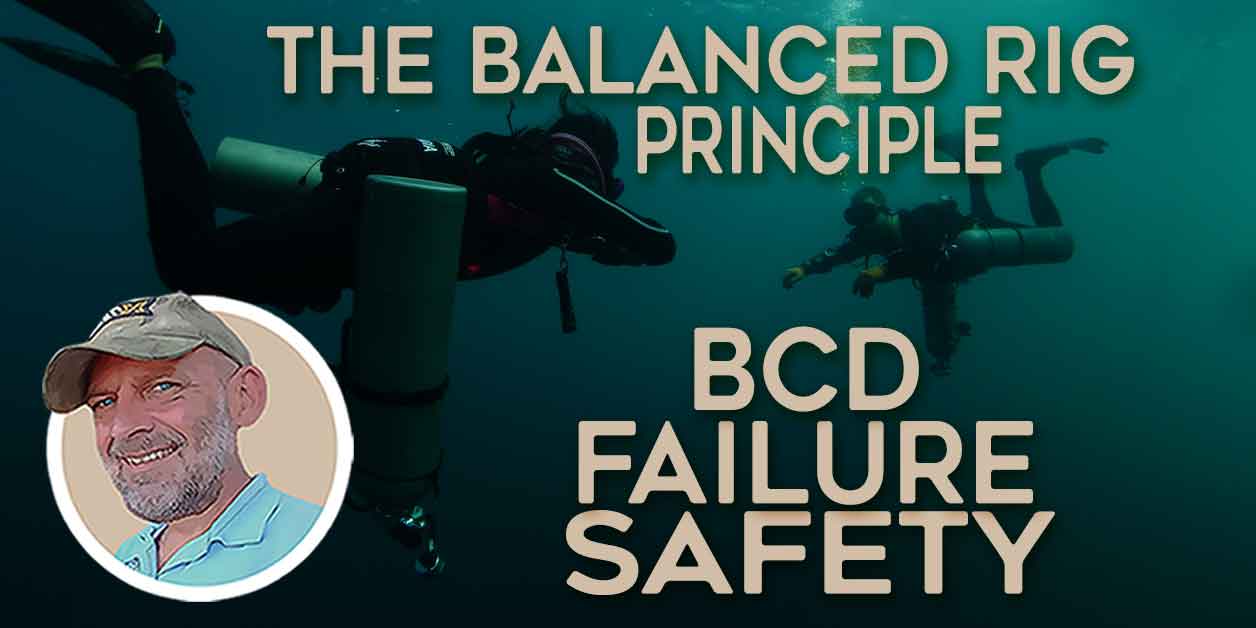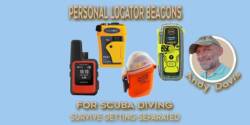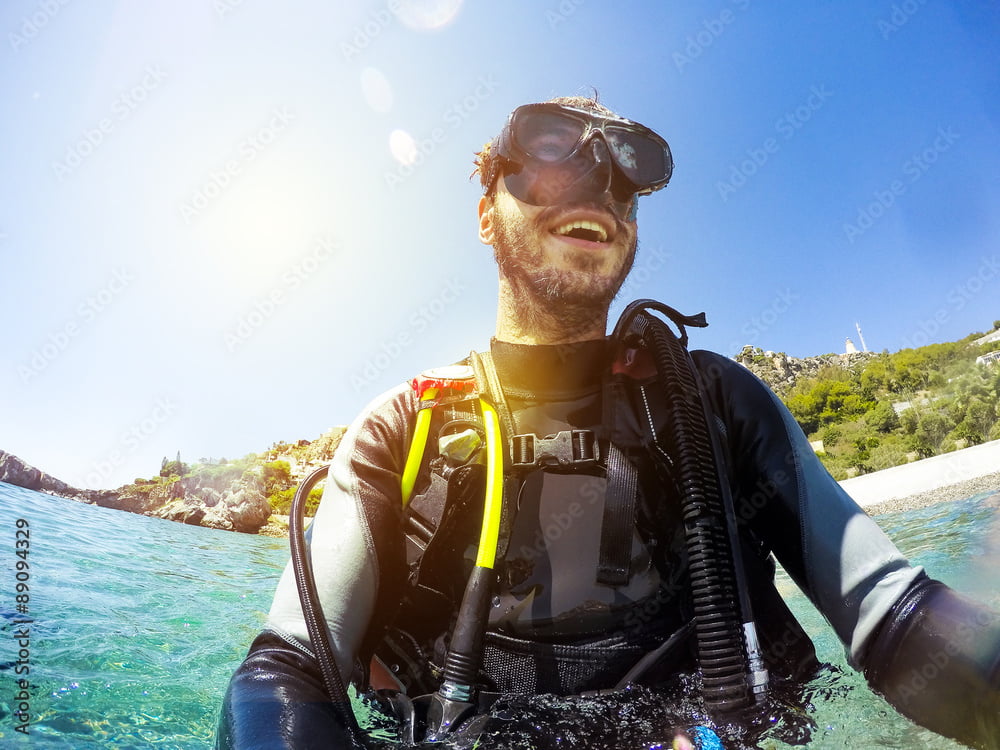An Ultimate Dive Guide to Diver Propulsion Vehicles: DPVs and Underwater Scooters
Diver Propulsion Vehicles, known as a DPV or underwater scooter, might be the biggest thrill a diver can experience. Pulling the trigger on these high-speed diving gadgets is your gateway to expanded range, extended exploration, and adrenaline-filled dives.
From beginner-friendly dive scooters designed on a budget for effortless use to advanced technical and cave diving DPVs capable of high speeds at extreme depths and long ranges, there exists a diver propulsion vehicle suitable for every type of scuba diver.
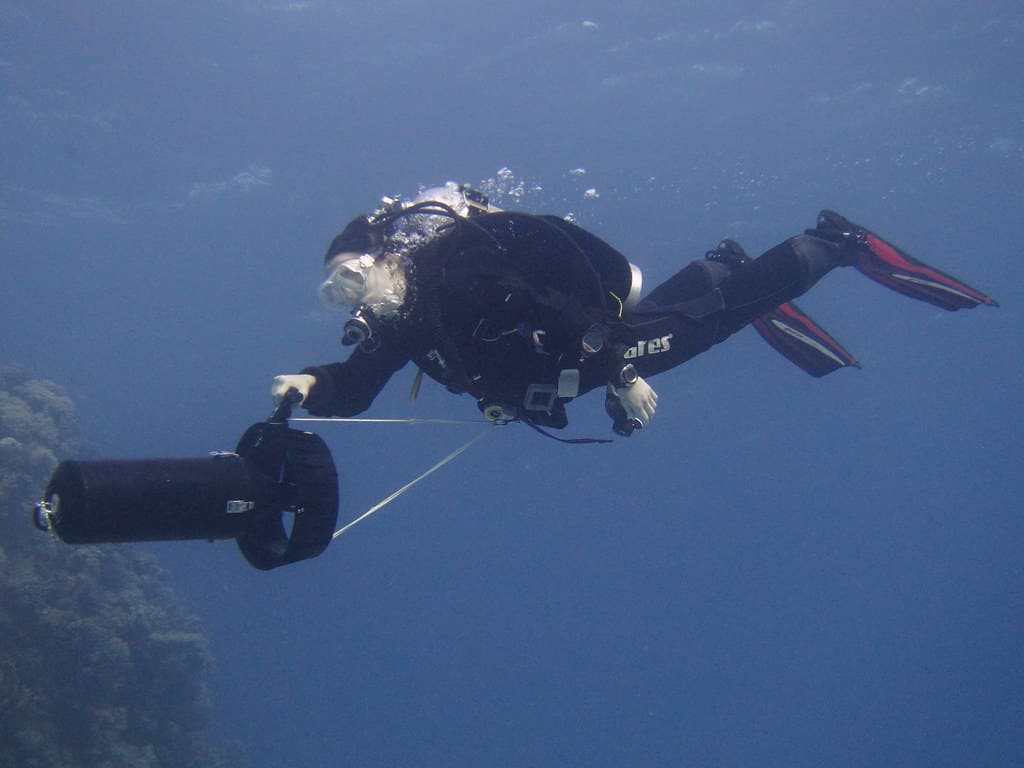
What is a Diver Propulsion Vehicle (DPV)?
Diver Propulsion Vehicles, known as DPVs, are battery-powered, propeller-driven underwater craft used for the purpose of enhancing recreational diver mobility.
For snorkelers and skin divers, these are commonly referred to as “underwater scooters,” typically lighter units not pressure-tested for deeper dives.
In contrast, DPVs used in diving are heavier due to a larger battery and tougher materials designed for increased pressure at depth. These devices efficiently propel divers through the water, conserving energy and facilitating faster exploration. They find widespread use in technical diving, underwater cave exploration, adaptive diving, and extensive coral reef surveys.
The preferred design for these vehicles is often a teardrop or torpedo shape with a rear-mounted propeller and handgrips. Divers utilize a trigger to activate the motor and adjust their body position and fins for steering. Other configurations include ride-on scooters and leg or tank-mounted DPV designs that free up divers’ hands.
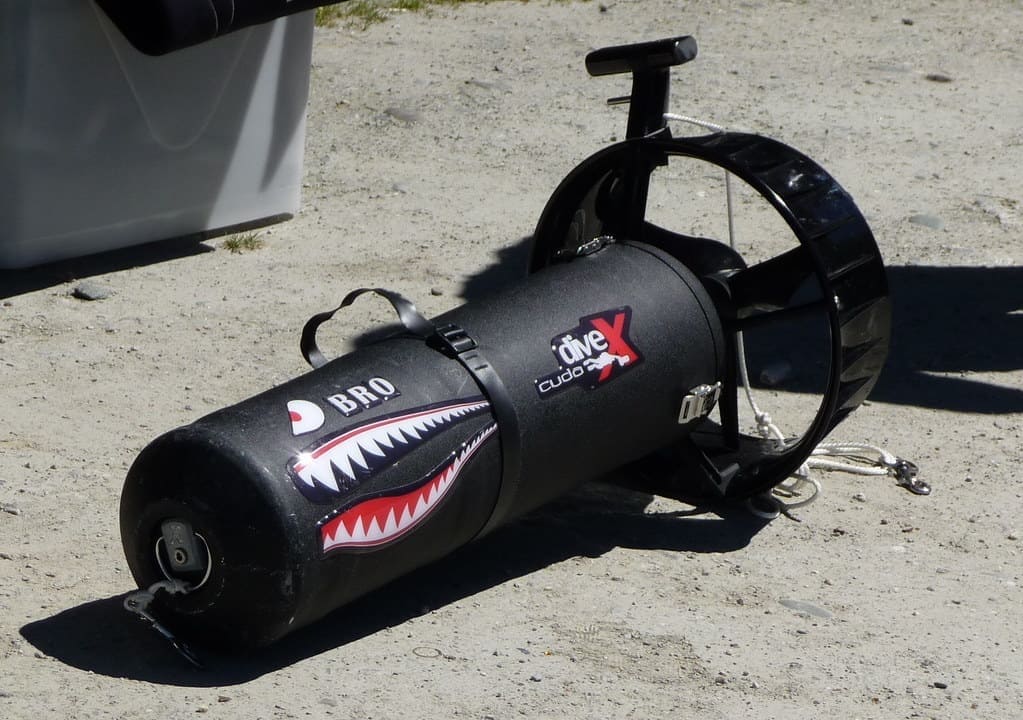
What is the history of Diver Propulsion Vehicles?
DPVs, also known in the military as ‘swimmer delivery vehicles’, have an intriguing history. The concept emerged during World War II when Italian frogmen first used early versions to navigate harbors for sabotage missions. These early DPVs were often hand-cranked and resembled torpedoes.
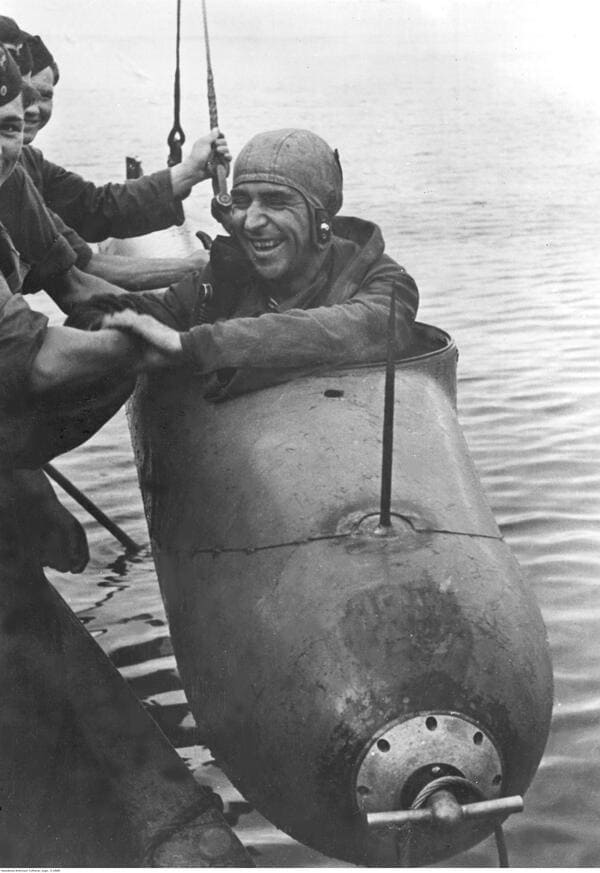
In the post-war years, DPVs evolved as recreational diving gained popularity. The 1960s saw the development of battery-powered DPVs, providing divers with a more efficient means of underwater travel.
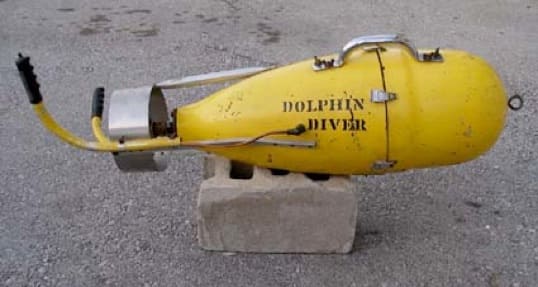
As technology advanced, DPVs became more compact, powerful, and widely used in various diving applications. The 1990s witnessed a surge in DPV popularity among cave divers, allowing them to cover larger distances in complex cave systems.
Today, DPVs are essential tools for technical divers, underwater photographers, and researchers. Modern units are lightweight, battery-powered, and capable of significant speed and range. Their use has expanded beyond recreational diving, finding applications in scientific research and military operations.
In conclusion, the history of DPVs reflects their evolution from wartime utility to indispensable tools for modern divers, offering enhanced mobility and exploration capabilities.
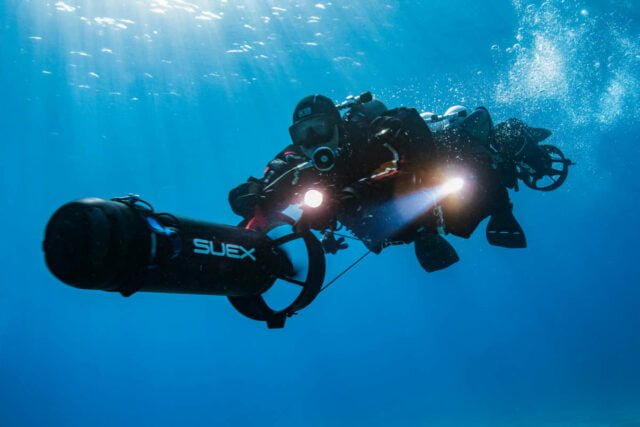
What are the benefits of using a Diver Propulsion Vehicle (DPV)?
- Increased Range: DPVs allow divers to cover larger distances underwater with less effort, conserving energy compared to traditional fin kicks.
- Better Air Consumption: Using a DPV results in improved air consumption as divers exert less effort, especially in challenging conditions like strong currents.
- Reduced Fatigue: By utilizing a DPV, divers experience less physical strain, making it an excellent tool for extended dives and exploration.
- Reducing exertion and fatigue on a dive also has advantages in reducing DCS and O2 toxicity risks.
- Efficient Exploration: DPVs enable faster exploration and survey of larger dive sites than would be possible by finning.
- Dealing With Current: DPVs allow divers to travel against strong currents that they would be unable to kick against.
- Moving Against Cave Flow: When cave diving, DPVs allow efficient exploration in systems where powerful flow would otherwise limit the diver’s ability to progress.
- Time Savings: By reducing travel time between points on a dive, DPVs optimize bottom time. More of the dive can be focused on achieving a desired goal.
- Enhanced Safety: DPVs can be crucial in emergencies, helping divers swiftly navigate to an exit or ascent point when time is of the essence.
- Effortless Gear Transport: When technical or cave diving a DPV, transporting multiple stage and decompression cylinders becomes almost effortless.
- Reduced Decompression Obligations: In cave diving, DPVs can help reduce decompression obligations by decreasing the time needed to pass along deeper horizontal routes.
Key Features of a DPV
- Body materials: DPVs are usually constructed from plastic, Delrin, aluminum, or carbon fiber.
- Propeller: 3-5 bladed propellers are typical
- Propeller shroud: Protects the diver from accidental injury from a moving propeller, and protects the propeller from damage through collision or entanglement. The shroud can also be shaped to increase thrust efficiency and channel propeller wash.
- Power control: Either an on-off switch or a throttle allowing the diver to designate a percentage of propeller RPM.
- Battery: Cheaper DPV models will use a low-performance lead acid battery, whereas more expensive models will make use of Ni-MH or Li-ion power cells.
- Tow cord: Higher-performance DPVs utilize a diver tow cord. This clips to the diver’s crotch strap D-ring and takes the strain of being towed. These also drastically increase maneuverability as the diver has more ease controlling the DPV with a single hand.
- Weighting system: Some DPVs have an additional weight plate for saltwater use, or accessible space within the body for the addition of weights or buoyant foam material to achieve neutral buoyancy and DPV trim in the water.
How fast are DPVs?
The maximum speeds of high-performance technical DPVs may reach 280ft (85m) per minute, with sustainable long-distance cruising speeds of 150ft (45m) per minute.
In contrast, basic recreational DPVs will typically have a maximum speed in the range of between 1- and 2.5 miles per hour (1.6 to 4km/hour)
What is the maximum range of DPVs?
A key metric for assessing a DPV’s performance is its run time, indicating the duration the scooter will function on a complete battery charge. When coupled with speed, another crucial performance indicator, these factors provide users with an estimate of the distance the DPV can cover.
The most expensive DPVs designed for cave exploration may have battery durations that allow 8-9 hours of use whilst at cruising speeds. This realistically enables distances up to 20 km (12.4 miles) to be covered.
In contrast, a basic recreational model, like the Seadoo GTS would only have a range of approximately 4.2 miles (6.7km), based on a battery duration of 1.5 hours and speed of 2.8 miles (4.5km) per hour. More economical brands will have far less range.
Choosing the best DPV for your requirements
When evaluating DPVs, numerous performance factors should be taken into account. Initiate the assessment by considering the overall construction quality; given the substantial investment in DPVs, durability and reliability are pivotal.
Battery performance
Furthermore, it’s crucial to recognize that battery capacity and efficiency may degrade over time. Investing in a superior-performance battery usually proves to be a wise choice for long-term value.
Do also consider battery factors such as charging times and whether batteries can be carried upon aircraft when you are traveling. If you intend to use a DPV on your overseas diving vacations, it’s best to opt for a model with removable, airline-compliant lithium-ion batteries.
If there’s a particular aspect of a DPV worth splurging on, a high-quality battery is the prime candidate. Higher-quality DPVs feature multiple speed settings, aiding in battery conservation and enhancing overall utility.
Depth rating
While depth ratings are indicative of the robustness of DPV design and materials, pay close attention to the quality and number of seals, which are also a factor in reliability. Needless to say, you should ensure that a DPV has a sufficient depth rating for the dives you intend to perform.
DPV weight and buoyancy
Weight and buoyancy are vital considerations. DPVs typically range from 10 to 40 lbs, with higher-performing technical models tending to be heavier.
A substantially negatively or positively buoyant DPV will affect your overall buoyancy as a diver. This decreases controllability and can increase diver fatigue.
Higher-priced DPVs feature compartment spaces that allow weights or buoyant foam to be added. This enables the diver to fine-tune the DPV for both neutral buoyancy and trim.
Additional DPV features and functions
Additional features like power level indicators or battery meters contribute to dive safety. Prioritize ease of maintenance, manufacturer or dealer customer service, and the availability of spare parts and service kits.
Given the substantial investment, diligent research is paramount. Reading product reviews, consulting gear manufacturers, and seeking advice from diving peers and mentors aids in ensuring you get the right DPV for your needs.
Key factors to consider when buying a DPV:
- Intended Use: Evaluate your specific diving goals and future aspirations. Ensure the chosen DPV aligns with your evolving skill set.
- Battery Specifications: Assessing power and run time aligns the DPV with your diving objectives.
- Customer Support: Purchasing from a local dive shop is advised for accessibility to qualified service technicians, crucial for DPV maintenance.
- Cost: DPV prices span a wide range, necessitating careful consideration within your budget constraints.
Selecting the right DPV demands a meticulous approach, balancing performance, reliability, and cost to enhance your diving experience.
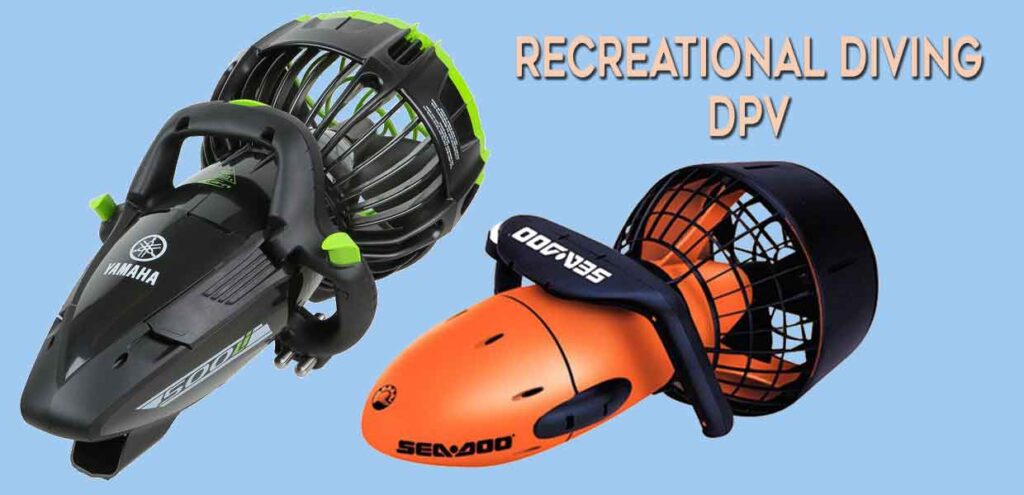
What range of DPVs is available?
When choosing a DPV, crucial considerations include factors like battery life, speed, and buoyancy control. Models differ in design and performance, catering to various diving preferences.
- Reputable high-range technical DPV manufacturers include Suex, Divex, SubGravity, Gavin, and Seacraft.
- For basic recreational diving, brands like Seadoo and Yamaha keep the costs lower, but provide decent levels of performance.
- In addition, there are various Chinese brands on shopping platforms like Amazon, usually at the lower end of the price scale.
1. Economy DPVs and Underwater Scooters
This category encompasses small, handheld DPVs designed for confined water or shallow open-water dives. With lower power output and limited battery run time, these DPVs are primarily for recreational purposes within these constraints.
2. Mid-Range DPVs
Larger DPVs that divers can grip with two hands or straddle for hands-free movement in the water. While the battery run time allows for slightly longer dives, these DPVs are primarily intended for recreational use in shallow open-water environments.
3. Technical and Cave DPVs
Robust, powerful, and reliable, these DPVs are designed for technical and cave diving. Divers secure them with a crotch strap D-ring and control their movement with one or two hands as the DPV tows them through the water.
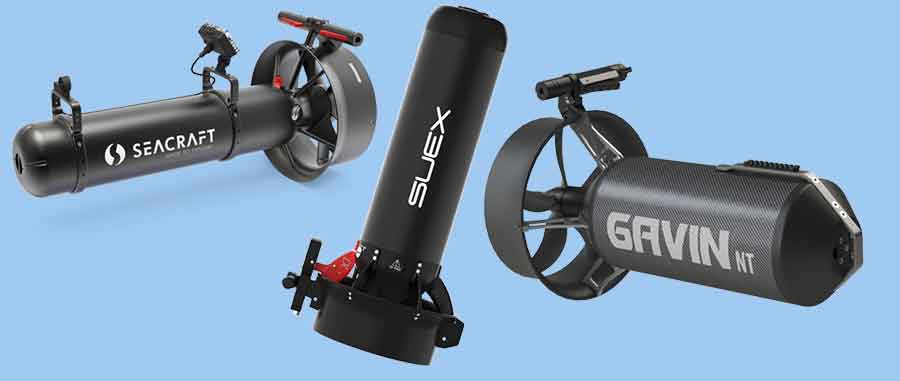
DPV Cost Considerations
The cost of diver propulsion vehicles can vary significantly, depending on the brand, model, and features. On average, anticipate spending between $800 to $6,000 or beyond for a quality DPV.
Entry-level options may fall in the range of $250 to $600, while advanced or technology-focused DPVs can command higher prices. It’s important to consider additional expenses for accessories and maintenance in your overall budgeting.
What Upgrades and Accessories are available for DPVs?
Depending on the model and manufacturer of the DPV you buy, there can be scope to upgrade performance or add useful accessories.
DPV Upgrades
Higher-quality DPVs usually allow after-market upgrades to increase performance and reliability:
- High-performance propellers: these can enable greater speed, more torque and/or increased efficiency.
- Instrument panels: An instrument panel, or dashboard, can be integrated to the DPV to allow mounting of a dive computer and/or compass. This allows the diver to manage their dive efficiently when the DPV is being used.
- Nose cones: These can be upgraded to provide a towing point, DPV trim weighting, and even complex navigational survey electronics, such as the SUEX Sinapsi.
- Vacuum bulkheads: These fit inside the end of a DPV tube and allow the diver to remove air from the DPV inner compartment. It is a tool to ensure the DPV is reliably watertight before diving.
- Cold water handles: These give more options when divers use thick neoprene or dry gloves.
- Double handles: Enable single-handed or both hands to be used to control the DPV.
- Battery conversion kits: These allow improved Ni-MH or Li-ion batteries to be fitted into a DPV.
DPV Accessories
There is a range of accessories available that help get the best out of a DPV. These may be available from the DPV manufacturer, or as generic OEM purchases:
- Camera and GoPro mounts
- DPV stands and transport cradles
- Carrying handles
- Towing harnesses
Safely operating a DPV
Operating a diver propulsion vehicle demands a set of critical skills to ensure a safe and enjoyable diving experience. Precise control of depth, neutral buoyancy, gas management, and situational awareness have to be consistent factors to ensure safety.
DPVs can amplify normal scuba diving risks, such as the potential for rapid ascents and descents that risk decompression illness or barotraumas. In addition, DPV-specific risks exist:
Depth control and buoyancy adjustment
Achieving simultaneous depth control and buoyancy adjustment is crucial during DPV operation.
- Proper training is necessary to master these skills, ensuring a controlled and safe dive.
- The challenge lies in making buoyancy adjustments while using a DPV, as failure to maintain neutral buoyancy can lead to uncontrolled depth changes when the DPV is stopped.
- Remember, maintaining control over your depth enhances both safety and the overall diving experience.
Gas depletion
Monitoring gas supply is a fundamental aspect of DPV operation, especially in overhead environments where the risk of DPV failure exists.
- Formal training is your gateway to understanding proper gas management techniques.
- If your dive plan involves traveling far from the water entry or ascent point, it’s crucial to consider alternative propulsion methods in case of DPV failure.
- Being well-prepared ensures that you can handle any unexpected challenges underwater.
Collisions and entanglements
Traveling with a DPV demands not only skillful maneuvering but also heightened situational awareness, particularly in confined spaces, overhead environments, or areas with limited visibility.
- The increased speed during DPV operation raises the risk of collisions with surroundings or the possibility of getting entangled with marine fauna or guidelines.
- Always be alert to your surroundings, and master the art of navigating with precision to minimize these risks.
Rapid ascents and descents
DPVs cover distance quickly, and that includes vertical distances. There is a potential to change depth far more rapidly than is safe.
Rapid ascents and descents with a DPV pose a more severe risk of decompression illness or barotrauma.
Unintended buddy separation
Traveling at greater speeds increases the risk of unintended separation from your dive buddy or team. DPVs enable divers to cover significant distances quickly, amplifying the consequences of lost situational awareness.
DPV maintenance hazards
Routine maintenance can also present hazards. For instance, charging Li-ion batteries in potentially damp conditions. It is important to adhere to established safe battery charging protocols to minimize explosion risks.
Increasing safety when DPV diving
When you first get a DPV, initially practice running it on the surface.
- Get used to the acceleration and stopping distance.
- Practice maneuvering the DPV by arching your back, leaning your body to the right or left, and using your fins like the rudder.
It’s advisable to use a checklist before diving with your DPV. This ensures that you’ve prepared the equipment properly and have taken into account all of the necessary dive planning factors.
- Fully charge batteries and test the unit at the surface before descending to ensure it’s working properly.
- Be aware of your remaining battery power throughout your dive.
- Make sure you always have an emergency action plan in case of DPV failure or flooding.
What training is needed for DPV diving?
It is highly advisable to undergo formal training to learn the best practices of DPV preparation and operation. Beyond mere proficiency in maneuvering a DPV, one must grasp more detailed dive planning, specific ascent and descent procedures, and essential details about the buddy system when using a DPV. Additionally, navigation and troubleshooting skills are useful proficiencies to develop through training.
Most dive training agencies offer DPV certification courses. There are basic courses at recreational diving levels, and more specialized courses for technical and cave divers.
How to select a good DPV course?
When selecting a DPV course, it is important to ascertain that your instructor is a legitimate subject matter expert in DPV diving.
Where possible, opt for an instructor who has experience utilizing higher-end DPVs on more complex dives; they will be able to offer more added value to your course.
What is taught on a DPV Diver Course?
Most recreational DPV Diver courses include a knowledge-development session that introduces different types of scooters, care and maintenance tips.
There will also be in-water skills and safety drills such as staying with your buddy and controlling your buoyancy while diving with a DPV.
Who can enroll in a recreational DPV course?
You’ll typically make two open-water DPV dives to practice handling, tandem riding with a buddy, and navigating a nearby site on an exploratory fun dive.
To take a DPV Diver course you must usually be at least 12 years old and have an Open Water Diver (or Junior Open Water Diver) certification.
DPVs and Adaptive Diving
Diver propulsion vehicles can open the world of scuba to disabled divers who might not otherwise be able to propel themselves. They can help divers to get around underwater when the usual method of finning isn’t possible; such as leg amputee divers, or those who are lower body paraplegics.
Consider a DPV to expand your diving horizons
In conclusion, integrating a Diver Propulsion Vehicle (DPV) into your diving arsenal can revolutionize your underwater experience. The array of options caters to diverse needs, whether you’re a recreational enthusiast, a technical diver seeking efficiency, or exploring the depths of cave systems.
Understanding the nuances of DPVs is crucial, as their capabilities vary in terms of battery duration and speed. While these underwater scooters open up new dimensions to exploration, it’s essential to acknowledge the increased risks they introduce.
Investing in a comprehensive specialist training course is not just a recommendation but a necessity. This not only enhances your skills but also ensures a safer and more enjoyable DPV diving journey. Navigate the depths with confidence and propel your underwater adventures to new heights.
About The Author

Andy Davis is a RAID, PADI TecRec, ANDI, BSAC, and SSI-qualified independent technical diving instructor who specializes in teaching sidemount, trimix, and advanced wreck diving courses.
Currently residing in Subic Bay, Philippines; he has amassed more than 10,000 open-circuit and CCR dives over three decades of challenging diving across the globe.
Andy has published numerous diving magazine articles and designed advanced certification courses for several dive training agencies, He regularly tests and reviews new dive gear for scuba equipment manufacturers. Andy is currently writing a series of advanced diving books and creating a range of tech diving clothing and accessories.
Prior to becoming a professional technical diving educator in 2006, Andy was a commissioned officer in the Royal Air Force and has served in Iraq, Afghanistan, Belize, and Cyprus.
In 2023, Andy was named in the “Who’s Who of Sidemount” list by GUE InDepth Magazine.
Purchase my exclusive diving ebooks!
Diver Propulsion Vehicle FAQs
A DPV, or diver propulsion vehicle, is used by divers for increased mobility. It is battery-powered and propeller-driven, used to tow divers around quickly.
Modern technical diving DPVs can reach speeds of 280ft (85m) per minute, with ranges exceeding 2.4 miles 920km)
A scooter used in the water is called a Diver Propulsion Vehicle (DPV), or is nicknamed an ‘underwater scooter’.
DPV stands for Diver Propulsion Vehicle.
The cost of a DPV can vary from $250 to over $6000, depending on batteries, depth rating and materials used.
Originally posted 2023-10-06 15:59:23.











